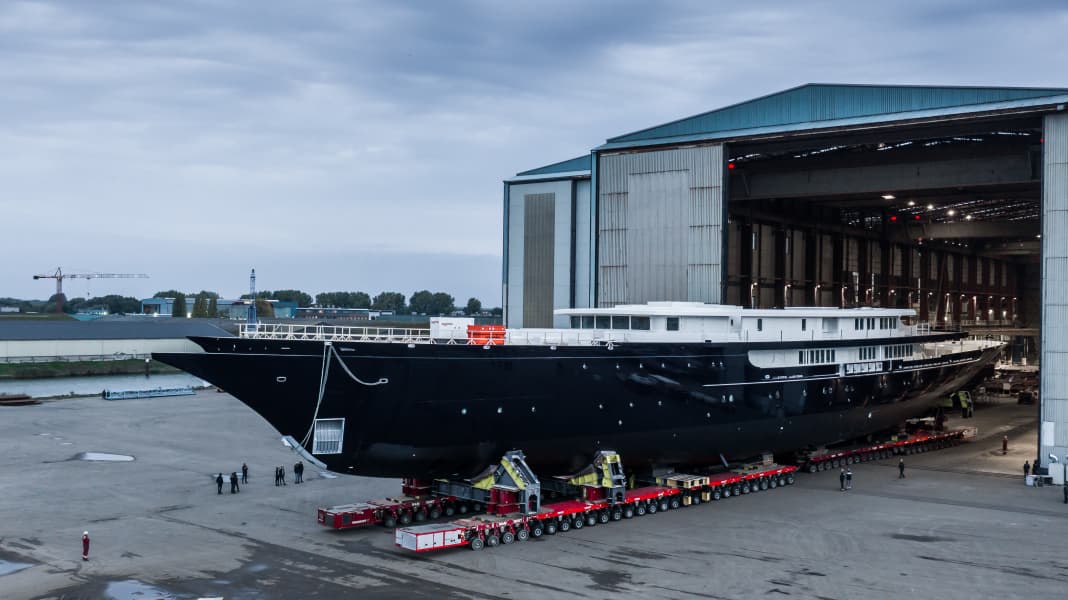Megayachts: Bezos wants to sail and builds the second largest sailing yacht in the world
Fridtjof Gunkel
· 05.02.2022

Somehow logical: the second richest man in the world is having the second largest sailing boat in the world built. The US American Jeff Bezos, who according to the Forbes list is number two behind Elon Musk with a fortune of 188 billion US dollars (80 more, but allegedly does not yet have a boat), has ordered a 127-metre-long tall ship from the Dutch shipyard Oceanco. However, the steel structure will only reach this length once its bowsprit has been fitted.
If it is, the ship ranks in the list of the largest sailing yachts (see also Boote Exklusiv, Issue 05/21 ) in second place behind the polarising "A" owned by Russian oligarch Andrey Melnichenko. There is plenty of room for debate: "A", built in 2017 at the German shipyard Nobiskrug, is a motor yacht with auxiliary sail propulsion, which means that Bezos' Y721 (the name has not yet been made public) could top the rankings.
The newbuild made headlines around the world because the ship is too high to pass the Koningshaven Bridge in Rotterdam, which is in the way on the way from the shipyard to the open water. Although the centre section of the bridge can be raised by 40 metres, this is too little for the ship with its masts set, and according to the shipyard, there is no other place to set the rig. According to the plans, the listed bridge structure is now to be dismantled and reassembled, with Bezos and Oceanco paying for it. There is protest against this among the population, the outcome is still unclear, but conceivable. The railway bridge, which opened in 1927, is a protected monument; it is considered to be the first structure in Rotterdam to be rebuilt after being bombed by Germany during the Second World War.
According to estimates from various sources, Y721 costs between 250 and 400 million dollars. A scene insider: "It's extremely dependent on the furnishings, if there's a van Gogh hanging on the wall, for example, and that's included, the price quickly skyrockets." The rigging is also unknown to the public. Many of the current private tall ships are sailing with a so-called dyna-rig, free-standing masts with curved yards. The development originally came from Wilhelm Prölss in the 1960s. The Franconian wanted to use it to propel cargo ships.
